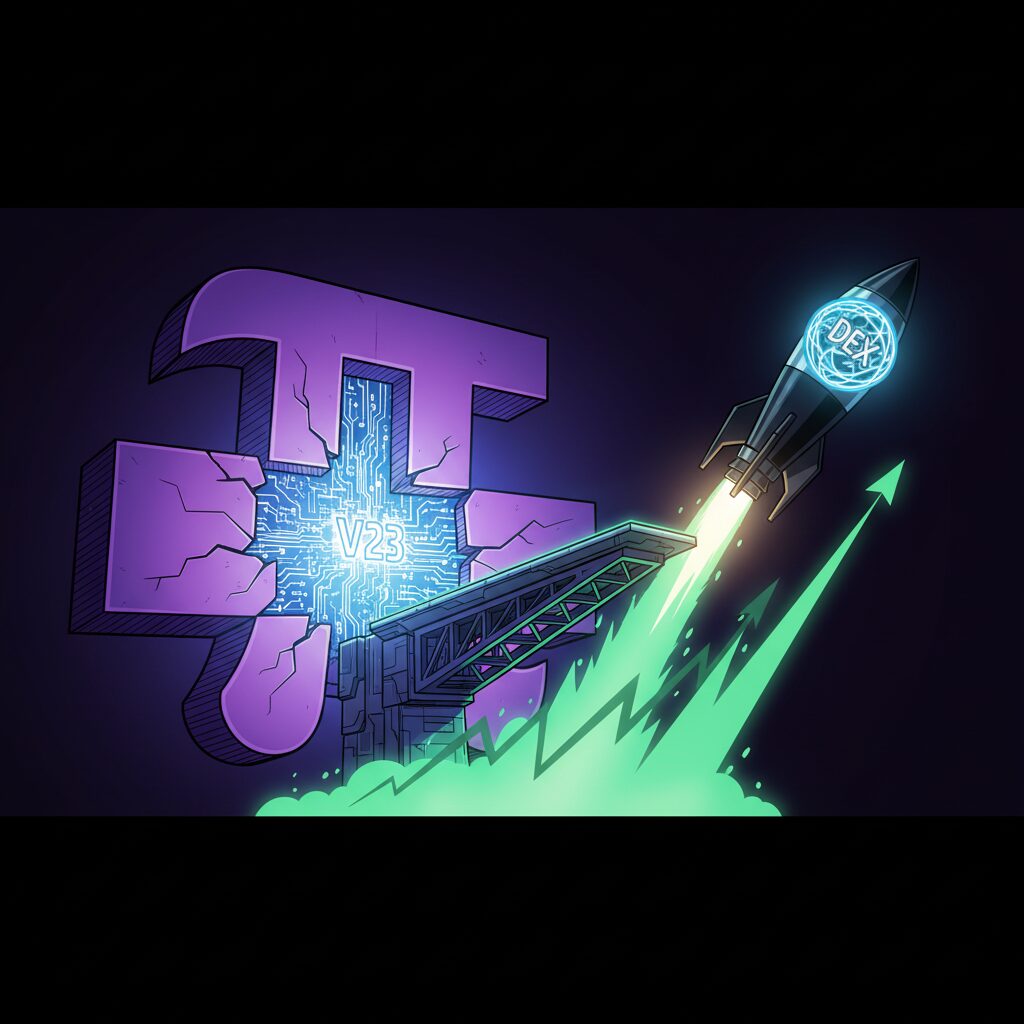Yei Finance Pause Highlights Systemic Risk in DeFi

In the world of decentralized finance (DeFi), innovation and risk are intrinsically linked. On the evening of November 5, 2025, Yei Finance, a prominent project on the Sei network, demonstrated this reality when it announced a temporary halt to its operations, citing anomalies in its fastUSD market. The move, while unsettling for users, was a precautionary measure. By the next morning, the team confirmed that all user funds were safe and that withdrawals were only suspended for those involved in debt repayment.
Background: The Rise of the Sei Network
To grasp the significance of Yei’s shutdown, it’s essential to understand the ecosystem it operates in. Sei, a Layer 1 blockchain designed for high-frequency trading, launched in 2023 with a focus on order book efficiency and rapid transaction settlement, in some cases outperforming even Solana. By October 2025, its total value locked (TVL) had surged past $500 million, bolstered by institutional interest and on-chain integrations from asset management firms.
Yei Finance emerged as a central hub within this vibrant environment. Its suite of products—including YeiLend for lending, YeiBridge for cross-chain liquidity, and YeiSwap for trading—enabled “yield stacking,” a strategy where users could earn lending rewards on top of liquidity provision. This mechanism attracted significant capital, pushing Yei’s TVL to $92.87 million and causing its native CLO token to climb 250% on its first day.
However, this growth was built on a complex network of dependencies. Yei’s liquidity pools relied heavily on synthetic assets like sfastUSD, a yield-bearing stablecoin pegged to Elixir’s deUSD, which in turn depended on Stream Finance’s XUSD. In DeFi, this interconnectedness means a tremor in one protocol can shake the entire network.
How the Crisis Unfolded
The chain reaction began on November 4, 2025, when Stream Finance was hit by a $93 million exploit. The attack caused its stablecoin, XUSD, to lose its peg by over 60%, triggering a domino effect across related assets. The following evening, the price of fastUSD on the Sei network became erratic, threatening the valuation of collateral within Yei’s lending pools.
In response, the Yei team initiated an emergency pause at 02:58 GMT on November 5. By 03:00 GMT the next day, an official clarification identified the core issue. The YeiLend main pool had an outstanding loan of approximately $8.6 million in USDC, which was collateralized by the now-volatile sfastUSD. To prevent a cascade of automated liquidations, the team decided to use its reserves to cover the debt and temporarily suspend withdrawals to manage the situation.
Vulnerable Collateral and Composability Risk
The incident exposed the structural fragility inherent in many DeFi collateral systems. On YeiLend, users could borrow USDC against sfastUSD with a loan-to-value (LTV) ratio of 70-80%. If the collateral’s value dropped below a certain threshold, the system was designed to automatically liquidate the position. The Stream hack caused sfastUSD’s value to fall by 20%, putting roughly $9 million in collateral at risk of being insufficient to cover the $8.6 million loan.
Without manual intervention, a wave of liquidations could have triggered a liquidity crisis, echoing the catastrophic collapse of Terra in 2022. Yei’s emergency pause, executed via a CosmWasm smart contract, successfully broke this cycle. Yet, the event also highlighted a deeper issue known as “composability risk,” where the innovations of one protocol become a potential liability for others built on top of it. With nearly a third of Sei’s stablecoin trading volume coming from derivative assets, the incident served as a stark reminder that over-reliance on layered synthetics can magnify minor issues into systemic threats.
A Lesson in Crisis Management
Yei Finance’s handling of the crisis has been viewed as a model of effective communication. The team issued transparent statements, promised full repayment, and provided a clear recovery timeline. This proactive approach stood in sharp contrast to the 48-hour silence from Elixir during its deUSD crisis, which resulted in a 40% drop in its TVL. Having previously managed a $2 million theft in October 2025 by fully reimbursing users, Yei’s swift and decisive action helped maintain community trust during a critical moment.
Community Trust Forged in Transparency
In a surprising turn, Yei Finance’s recent operational pause strengthened community trust rather than eroding it. Positive sentiment on platforms like X and Discord reached approximately 70%, with some key opinion leaders (KOLs) calling it a textbook case of effective damage control. The project’s transparent communication transformed a potential panic into a period of collective problem-solving. This surge in engagement boosted activity on the project’s Discord by 300%, shifting its role from a simple help channel to a collaborative think tank, even as some users voiced concerns over the suspension’s duration and associated leverage risks.
An Ecosystem-Wide Stress Test
The Yei incident served as a critical stress test for the entire Sei network. Despite Yei being the second-largest protocol in the ecosystem, its temporary shutdown caused only a minor 3% drop in the price of SEI, with negligible fund outflows from decentralized exchanges. This highlighted the diversified and robust nature of the Sei ecosystem, which wasn’t overly dependent on a single protocol.
However, the event also exposed several underlying vulnerabilities. Key risks included an excessively high proportion of synthetic assets used as collateral, potential delays from oracles during extreme market conditions, and the limitations of on-chain insurance mechanisms. Such challenges are not unique to Sei, as the DeFi space has witnessed over 15 similar suspension events in recent years, from oracle freezes on Aave to liquidity crises on Compound.
Forging a More Resilient Future
The lessons from Yei’s experience offer a clear roadmap for strengthening DeFi risk governance. Future improvements could involve reducing the collateral ratio for synthetic assets to below 50% and introducing faster, multi-source oracles. Another proposed solution is a “tiered suspension” mechanism that would prioritize freezing only the highest-risk pools instead of halting the entire protocol.
At the ecosystem level, the incident sparked discussions about establishing a public resilience fund on Sei, supported by transaction fees and veSEI staking. For institutional investors now entering the space, this event is a crucial reminder for projects to balance the pursuit of high throughput with robust security. For users, the key takeaways are to prioritize stable assets like USDC, maintain leverage below 3x, and diversify investments to mitigate risk. These strategies are essential for evolving DeFi from a speculative arena into an engineered financial system where risk is managed, not just avoided.
A Turning Point for Growth
Ultimately, the Yei Finance episode illustrates a core truth of DeFi: innovation and risk are intrinsically linked. As the protocol prepared to resume operations, the event was etched into the blockchain’s permanent record not as a failure, but as a crucial turning point. In the ongoing development of decentralized finance, these pauses are vital for helping the ecosystem mature from fragile to truly resilient. It’s a clear admonition for all builders that in the precise world of code, resilience must be forged with the same dedication as efficiency.
Disclaimer: The information provided in this article is for informational purposes only and does not constitute financial advice, investment advice, or any other sort of advice. You should not treat any of the website’s content as such. Always conduct your own research and consult with a professional financial advisor before making any investment decisions.











